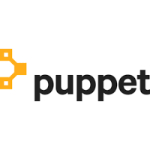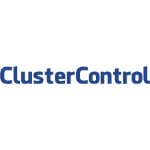
TechnologyCounter provides genuine, unbiased real user reviews to help buyers make informed decisions. We may earn a referral fee when you purchase through our links, at no extra cost to you.
List of 15 Best Configuration Management Software
Showing 1 - 15 of 22 products
ManageEngine Network Configuration Manager
Software by ManageEngine.
Network Configuration Manager is a comprehensive solution for managing network configurations holistically. With features like backup, change management, compliance management, automation, and firmware vulnerability management, it simplifies network...Read ManageEngine Network Configuration Manager Reviews
Azure Automation, the modern solution for simplifying and streamlining your IT operations. With Azure Automation, you can automate mundane and repetitive tasks, freeing up valuable time and resources for more valuable tasks. Say goodbye to manual pro...Read Azure Automation Reviews
Auvik is a network management tool designed to simplify and streamline the complexities of IT infrastructure management. With its intuitive interface features, Auvik helps businesses effectively monitor, troubleshoot, and secure their networks for ma...Read Auvik Reviews
Progress Chef is a software designed to streamline and optimize the food and hospitality industry. With its user-friendly features technology, Progress Chef revolutionizes the way restaurants and hotels manage their operations. This game-changing sof...Read Progress Chef Reviews
Ansible Tower is a automation tool designed to simplify and streamline the management of IT infrastructure. With its intuitive interface and robust features, Ansible Tower is a solution for organizations looking to effectively orchestrate and automat...Read Ansible Tower Reviews
Atlassian Bamboo is a automation and deployment software for teams of all sizes. Streamline your development process, save time, and improve collaboration with this powerful tool. From building and testing to deploying and releasing, Bamboo has got y...Read Atlassian Bamboo Reviews
TeamCity is a is a tool designed for continuous integration and delivery. This software helps teams streamline their development processes and ensure high-quality, timely delivery of software projects. With its intuitive interface and robust features...Read TeamCity Reviews
Docker is a software that enables developers to package and run applications in a lightweight, portable container. Whether youre building, shipping, or deploying your projects, Docker simplifies the process by eliminating compatibility issues and str...Read Docker Reviews
Puppet, a powerful is a tool for automating the management of your IT infrastructure. With its user-friendly interface and vast array of features, Puppet simplifies the task of configuring and deploying applications, making it an essential software f...Read Puppet Reviews
BladeLogic is a software designed for automating and managing critical IT infrastructures. With its advanced capabilities, BladeLogic streamlines tasks, ensures compliance, and reduces the costs associated with manual processes. Its innovative featur...Read BladeLogic Reviews
ClusterControl is a all-in-one database management and monitoring software designed to simplify and automate your cluster operations. With advanced features and a user-friendly interface, ClusterControl streamlines the management of your databases, e...Read ClusterControl Reviews
Unimus is a and versatile network management platform designed to streamline and simplify the IT infrastructure of businesses of all sizes. With its user-friendly interface features, Unimus offers efficient and effective solutions for managing networ...Read Unimus Reviews
CFEngine is a automation tool that streamlines management and maintenance of large-scale IT infrastructure. With its advanced features and user-friendly interface, CFEngine enables businesses to efficiently and effectively manage their systems and ap...Read CFEngine Reviews
SaltStack is a IT automation and configuration management tool that simplifies the management of large-scale computing environments. Designed with speed, scalability, and reliability in mind, SaltStack provides a centralized platform for managing and...Read SaltStack Reviews
Octopus Deploy is a software solution that streamlines the deployment process of applications and services. With its simple yet effective approach, Octopus Deploy enables teams to easily automate deployments and deliver software changes faster and wi...Read Octopus Deploy Reviews
- What Is Configuration Management Software?
- Top Reasons Why Businesses Need Configuration Management Software?
- What Are the Top Key Features of Configuration Management Software?
- What Are the Top Benefits of Configuration Management Software?
- What Are the Steps to Choose the Right Configuration Management Software?
- What Are the Types of Configuration Management Software for Different Industries?
- What Are the Technology Trends for Best Configuration Management Software?
- What Are the Deployment Options for Configuration Management Software?
What Is Configuration Management Software?
Configuration management software (CMS) is a software solution designed to facilitate the efficient management and monitoring of an organization's infrastructure. The purpose of this system is to supervise the hardware and software elements that are utilized for the operation of applications, workloads, and services inside the information technology infrastructure of a business.
In certain instances, network administrators or system administrators employ it to deploy, manage, and monitor alterations to information technology systems. The software provides numerous benefits and facilitates the preservation of a system's integrity through the monitoring of system modifications that may potentially result in detrimental consequences.
Additionally, this feature enables system administrators to identify modifications and promptly address any potential risks that may arise. The primary objective of configuration management tools is to mitigate the occurrence of illegal alterations to a system and uphold the system's overall stability.
Additionally, it facilitates the frequent updating and installation of various folders and files. software configuration management tools are frequently employed during the initiation of IT systems and subsystems to enable administrators to effectively identify, monitor, and control modifications during the course of time.
In general, the best configuration management tool is a robust tool employed for the purpose of effectively managing and monitoring components within an organization's information technology systems. It plays a crucial role in ensuring the secure and efficient operation of these systems.
Top Reasons Why Businesses Need Configuration Management Software?
1. To ensure the optimal dependability and availability of system configurations, it is imperative to implement appropriate measures.
2. The purpose of authentication is to establish the veracity of system modifications by maintaining a comprehensive record of the specific changes implemented and their corresponding timestamps.
3. To facilitate the prompt reversal of any modifications that result in complications.
4. To facilitate the simultaneous deployment and rollback of settings across several servers, it is necessary to provide system administrators with the capability to do so.
5. To facilitate the customization of setups across many platforms, encompassing diverse servers, workstations, and services.
6. To mitigate the faults resulting from manual configuration.
7. To facilitate the efficient implementation of patches and software updates.
8. To ensure the consistent implementation of configurations across all systems inside a business.
9. To effectively monitor and assess the performance and stability of systems.
10. To ensure centralized and secure access to all configurations.
11. To guarantee adherence to business rules, such as the Sarbanes-Oxley Act (SOX) or the Health Insurance Portability and Accountability Act (HIPAA).
12. To assist in the recovery from disasters and the development of strategies to ensure the continuity of business operations.
13. To reduce expenses related to labor, namely those associated with manual configuration chores.
14. To enhance the level of transparency within an organization's information technology (IT) infrastructure.
15. The primary objective is to enhance transparency regarding the security status of the organization's systems.
What Are the Top Key Features of Configuration Management Software?
The top key features of configuration management software include:
1. Automation of system tasks: Software configuration management tools are a type of software that facilitates the automation of many system operations, including but not limited to installation, configuration, patching, and deployment.
This results in a decrease in the amount of time and effort needed to accomplish system activities, enabling configuration administrators to allocate their attention to tasks of greater significance.
2. Standardization: The best Configuration management software plays a crucial role in promoting uniformity and security by facilitating the standardization of system configurations and software packages across diverse contexts.
3. Security: Software configuration management software is a tool that offers system monitoring and security upgrades, specifically designed to safeguard the system against potential external threats.
Additionally, it provides the capability to establish access levels to restrict data access and modification solely to authorized individuals.
4. Audit trails: Configuration management database tools are utilized to monitor and record any modifications performed on a system, hence generating audit trails that serve the purpose of troubleshooting or ensuring compliance.
5. Scalability: Top configuration management software possesses a notable degree of scalability, rendering it suitable for the effective management of expansive network infrastructures.
Additionally, it guarantees optimal system performance through the preservation of configuration integrity.
6. Version control: Software configuration tools enable users to effectively monitor and manage modifications implemented inside a system, while also providing the capability to revert back to a previous version in the event of errors or undesired outcomes.
7. Database integration: The seamless integration of the best configuration management software with database systems facilitates the storage and monitoring of configuration histories and versions.
What Are the Top Benefits of Configuration Management Software?
1. Improved Efficiency: The best configuration management software is a valuable tool utilized by system administrators to streamline the administration of hardware and software modifications. By automating the tracking process, this software enhances system efficiency and minimizes the amount of time spent on laborious manual activities.
2. Automated Updates: Top configuration management software facilitates the automation of the update issuance process for interconnected systems and applications, thereby guaranteeing their continuous alignment with essential security protocols.
3. Streamlined Compliance: Software configuration management tools play a crucial role in ensuring that systems are equipped with the latest security standards. This not only facilitates the process of adhering to industry or regulatory compliance requirements but also contributes to the simplification of this endeavor.
4. Cost Savings: Configuration management technologies play a crucial role in cost reduction for enterprises through the elimination of manual processes and the facilitation of accelerated development and deployment timelines.
5. Improved Capacity Planning: Top configuration management software offers valuable insights into resource requirements for various systems, aiding firms in proactive planning and optimizing resource allocation.
6. Easier Troubleshooting: Configuration management technologies enable IT professionals to efficiently and effectively discover and rectify the underlying cause of any application-related problem or erroneous system configuration.
7. Increased Visibility: Configuration management software provides enhanced visibility into the operations of a system, enabling IT staff to effectively monitor and record any modifications made to hardware or software components.
8. Improved Disaster Recovery: Configuration management database tools facilitate the ability of IT managers to efficiently and expeditiously revert to prior system configurations in the event of an unforeseen disaster.
What Are the Steps to Choose the Right Configuration Management Software?
1. Identify Your System Requirements: The initial stage in the process of selecting appropriate top configuration management software entails evaluating the specific requirements of the system.
When determining the most suitable software for your requirements, it is imperative to take into account several elements, including but not limited to budgetary considerations, scalability potential, security measures, compatibility aspects, and other relevant considerations.
2. Research and Evaluate CM Software Solutions: After establishing the system requirements, it is advisable to commence the process of studying and assessing various the best configuration management software solutions to identify the most suitable options that align with your specific demands.
It is imperative to thoroughly examine the product characteristics, carefully evaluate user evaluations, and avail oneself of free trial opportunities to ascertain the suitability of the product.
3. Consider Product Integration: The seamless integration of configuration management tools into an organization's pre-existing IT infrastructure is of paramount importance. It is imperative to conduct a thorough investigation into the compatibility of the product, and the integration methods involved, and carefully analyze any documentation about the integration process.
4. Account for Future Changes: Before selecting a configuration management system, it is imperative to proactively consider and anticipate any prospective alterations that may arise in the future.
When choosing a software solution, it is crucial to take into account many factors such as scalability, usability, long-term cost savings, and security. These considerations are essential to ensure that the selected software can accommodate the growth of your organization over time.
5. Review Support Options: Finally, it is advisable to thoroughly evaluate the available support choices provided by the providers of software configuration management tools before concluding. To ensure adequate support, it is imperative to ascertain whether basic customer service, technical assistance, or a combination of both is required.
What Are the Types of Configuration Management Software for Different Industries?
The term "configuration management software" refers to software or platforms utilized for the purpose of managing and monitoring the projects, components, and procedures associated with the functioning of an organization. Various sectors employ diverse types of software to effectively handle their configuration management tasks.
Depending on the organization, one or more of the following types of configuration management tools may be used:
1. Cloud Configuration Management Software: The purpose of this system is to monitor and manage various components of cloud infrastructure, including virtual machines, storage, and network connections. These systems facilitate the efficient allocation and administration of resources by administrators.
2. Network Monitoring Software: Network performance monitoring is a commonly employed practice to diagnose and resolve issues, as well as monitor security incidents.
3. Compliance Software: Administrators are empowered to verify that systems and processes adhere to regulatory criteria.
4. Change Management Software: The program allows administrators to effectively oversee and monitor modifications made to the system, facilitating prompt identification of any potential disruptions caused by these changes.
5. Database Configuration Management Software: The role of the monitor is to oversee the system databases and maintain a comprehensive log of any modifications made to the databases.
6. Configuration Verification and Validation Software: The system monitors and records system configurations, and conducts verification processes to ensure that the system is functioning according to expected standards.
7. Asset Management Software: The system effectively monitors and manages both hardware and software assets, encompassing warranties and licenses.
8. Patch Management Software: This solution automates the process of patch installation and system tracking for patch impact.
9. Configuration Automation Software: Automates configuration processes and sends notifications when changes are made to the system.
10. Security Auditing Software: Automates the process of verifying system security efforts are effective.
What Are the Technology Trends for Best Configuration Management Software?
The advancements in top configuration management software are undergoing rapid evolution. It is crucial to proactively monitor and anticipate emerging trends in order to ensure the utilization of the most optimal systems.
Some of the current trends in the best configuration management software include:
1. Automation: The integration of automation into configuration management has emerged as a significant aspect, facilitating expedited application deployment and enhanced security setups. Automation is known to enhance efficiency through the mitigation of manual errors.
2. Cloud Computing: The adoption of cloud-based configuration management systems is increasing in popularity among organizations seeking cost reduction and more flexibility. Cloud-based tools can effectively administer intricate systems across many geographical locations.
3. Infrastructure as Code: The concept of infrastructure as code enables users to express application configurations in the form of code and effectively administer resources through command line interfaces. This approach eradicates the need for manual deployments and guarantees uniformity throughout your system.
4. Security: The issue of security has emerged as a prominent concern within enterprises, necessitating a heightened emphasis on secure configurations in configuration management tools. This frequently entails the implementation of encryption and enhanced authentication mechanisms to mitigate the risk of illegal access.
5. Scalability: To effectively meet the evolving demands of customers, configurations must possess the capability to seamlessly expand or contract. The ability to efficiently and effectively modify configurations in response to evolving client requirements is a crucial feature of software configuration management tools.
6. Monitoring and Reporting: The capability of real-time configuration monitoring and provision of comprehensive reports to facilitate the identification of configuration errors is a crucial requirement for The best configuration management software. This tool can be utilized to promptly identify and rectify difficulties before they escalate into financially burdensome complications.
What Are the Deployment Options for Configuration Management Software?
The selection of deployment options for The best configuration management software is contingent upon the scale and extent of an organization's IT infrastructure. Potential choices encompass on-site installations, cloud-centric implementations, and hybrid cloud arrangements.
On-premises deployments encompass the process of configuring software within an organization's hardware and servers, situated within the organization's physical premises. Cloud-based deployments refer to the process of configuring software on a cloud platform, such as Amazon Web Services or Microsoft Azure.
Hybrid cloud deployments facilitate the utilization of both on-premises and cloud infrastructure within an enterprise, hence enabling enhanced scalability and flexibility of service.














